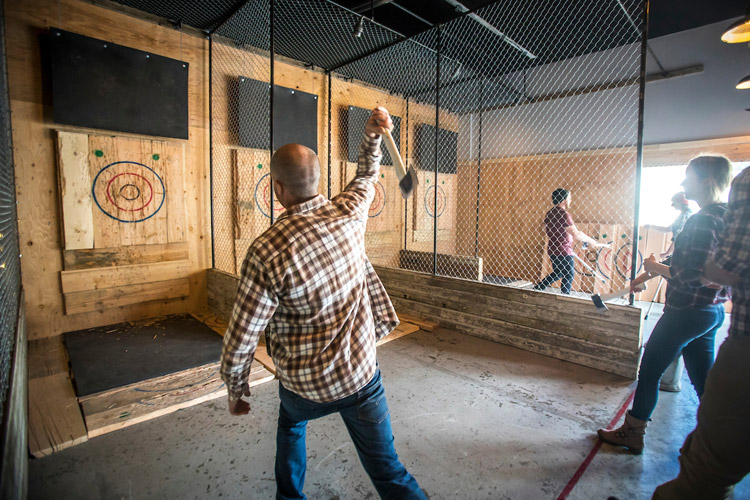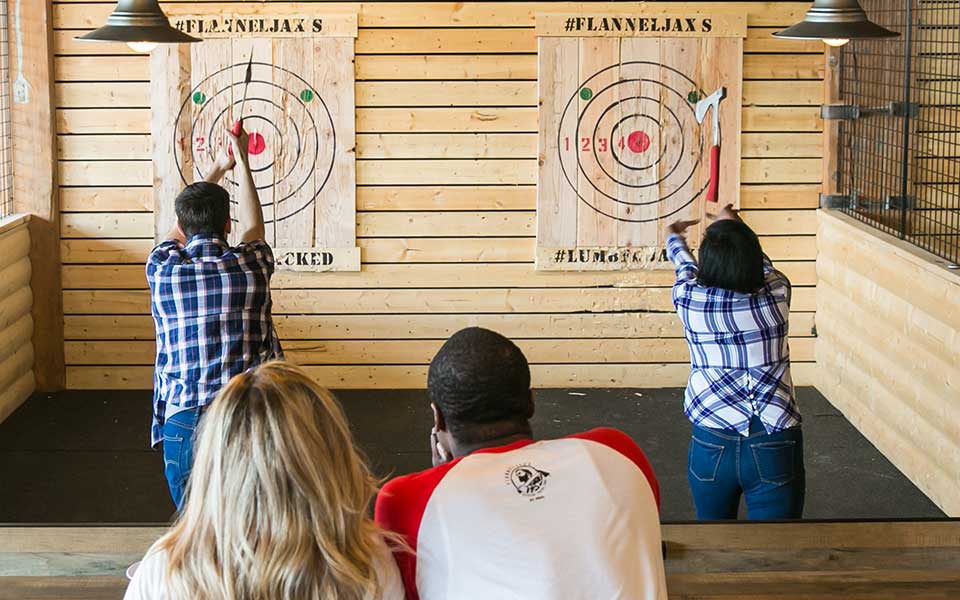The Fun of Axe Throwing: Just How This Sporting Activity Integrates Ability and Adrenaline for a Blast
Axe throwing has actually emerged as an astounding sporting activity that masterfully intertwines the requirement for accurate skill with the rush of adrenaline, offering individuals a engaging and special experience. The act of tossing an axe towards a target demands concentration and strategy, at the same time fostering an ambience of sociability and pleasant rivalry.
The Origins of Axe Throwing
Axe throwing, a recreational activity that has actually obtained considerable appeal in current years, traces its origins back to ancient times. The earliest records of axe use in competitive contexts are discovered among the Celts and Vikings, that threw axes for sporting activity as well as in combat training.
Medieval European warriors, particularly during the Center Ages, exercised axe throwing as part of their martial training. The Francisca, a kind of tossing axe made use of by the Franks, ended up being iconic for its lethal accuracy. This standard tool was developed to be thrown at opponent shields and shield, showcasing its dual utility in both sporting activity and fight.
In more current background, axe tossing saw a resurgence in the logging camps of North America in the 20th and 19th centuries. Lumberjacks would certainly involve in pleasant competition, testing their accuracy and strength by intending at wooden targets. This evolution from a survival ability to an entertainment activity has actually led the way for its contemporary rebirth, with specialized venues and leagues currently celebrating the sporting activity worldwide.
Equipment You Need
Comprehending the rich background of axe tossing boosts the admiration of the sport's modern-day model. Central to this thrilling task is the equipment, which is essential for both security and performance. The primary tool is, of course, the axe. For recreational and competitive axe throwing, the most frequently made use of type is the hatchet, commonly evaluating between 1.25 to 2 extra pounds with a take care of length of around 16 inches. The axe ought to have a sharp, well-kept blade and a deal with made from durable wood or composite material, ensuring a good grasp and balance.
Just as essential is the target. Policy targets are created from wood, with softwood ranges like yearn or cottonwood being preferred for their ability to take in and hold the axe. The target is generally divided into five concentric circles, each with a specific point worth, to promote rating.
Security gear, though frequently ignored, is critical. Safety gloves can boost grasp and stop sores, while closed-toed footwear are a must to protect feet from gone down axes (ax throwing denver). A well-lit, sizable throwing location, total with safety barriers, makes certain a controlled environment where participants can concentrate on honing their abilities.
Basic Techniques Clarified
Understanding the basic techniques of axe throwing is crucial for both safety and security and proficiency. The dominant hand ought to be placed directly listed below the axe head, while the non-dominant hand sustains the end of the manage.
Following, concentrate on the stance. Stand with your feet shoulder-width apart, ensuring your body is balanced. Your dominant foot should be slightly onward, lining up with your target. This positioning aids in maintaining stability and guiding power properly towards the target.

Security First
Making certain security in axe throwing is vital to producing a enjoyable and injury-free experience. A well-designed axe tossing facility attributes clear separations in between tossing lanes, tough backgrounds to capture roaming axes, and non-slip flooring to avoid accidents.
Benefits of Axe Throwing
Axe throwing offers a myriad of benefits that prolong past easy entertainment. The recurring movement of throwing the axe likewise enhances hand-eye coordination and great electric motor abilities.
Emotionally, axe tossing calls for approach, accuracy, and emphasis, making it an excellent method to sharpen cognitive skills. The focus needed to hit the target can work as a kind of mindfulness, allowing participants to remove their minds and reduce stress and anxiety. This mental interaction can be especially beneficial in assisting people establish much better analytic skills and mental strength.
Socially, axe throwing is frequently enjoyed in team setups, cultivating team-building and camaraderie. Whether as part of a company occasion or an informal outing with friends, the sporting activity motivates communication and collaboration. Furthermore, the communal experience of finding out and improving with each other can strengthen partnerships and develop lasting memories.
Final Thought

The earliest records of axe usage in affordable contexts are located among the Celts and Vikings, that threw axes for sporting activity as well as in fight training. Launch the axe when your hands are around at eye degree, permitting the axe's natural rotation to lead it in the direction of the target.
A well-designed axe throwing center functions clear separations in between throwing lanes, tough backdrops to catch stray axes, and non-slip flooring to stop accidents. Individuals have to be advised on the right method to toss the axe and handle, emphasizing managed, calculated activities over forceful tosses.
In summary, axe throwing stands out as a sport that masterfully incorporates precision, ability, and adrenaline.